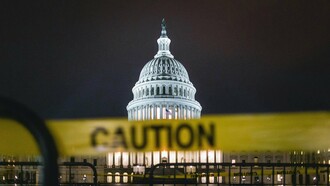The US stock market in 2025 is at a heightened risk of facing significant disaster due to evolving economic, political, and technological factors. Despite its historical resilience, the market is increasingly fragile, raising serious concerns among investors and analysts.
Economic instability remains a major threat. In 2025, persistent inflation, exacerbated by supply chain disruptions, global economic slowdown, and high energy prices, continues to strain the US economy. The Federal Reserve’s aggressive interest rate hikes have led to higher borrowing costs, declining corporate profits, and reduced consumer spending, creating a volatile investment climate. Political instability adds another layer of uncertainty. Geopolitical tensions, including escalating conflicts in Eastern Europe and the Middle East, coupled with strained US-China relations, have disrupted global trade and financial flows.
Domestically, political polarization and legislative deadlock on fiscal policies further weaken investor confidence. Technological disruptions in 2025, such as widespread adoption of AI-driven trading systems, increase the risk of market manipulation and flash crashes. Cybersecurity threats, including large-scale data breaches and financial system hacks, pose significant dangers to market stability. Corporate mismanagement, rising debt levels, and speculative bubbles in sectors like technology and cryptocurrencies mirror past crises. Global interconnectivity ensures that financial turmoil in any major economy impacts the US market. 2025 presents unique challenges for the US stock market, demanding careful risk management, regulatory oversight, and strategic investment to avoid disaster.
Adding to these risks, the real estate market in 2025 shows signs of a potential bubble. Rapidly rising property prices, driven by speculative investments and low inventory, echo the conditions that led to the 2008 financial crisis. A collapse in the housing market could trigger widespread financial losses and negatively affect the stock market. The labor market also faces challenges, with rising unemployment due to automation and AI replacing traditional jobs. This shift reduces consumer purchasing power, impacting corporate revenues and stock prices. Additionally, high levels of consumer debt, including credit card and student loan debt, further strain the economy.
Environmental factors, such as increasing natural disasters and climate change-related disruptions, also pose significant financial risks. Severe weather events can damage infrastructure, disrupt businesses, and lead to substantial economic losses, impacting market performance. Furthermore, the global energy crisis, with rising oil and gas prices, increases operational costs for companies and reduces profit margins, leading to lower stock valuations. In response to these threats, investors in 2025 must adopt diversified portfolios, invest in stable sectors like healthcare and utilities, and stay informed about geopolitical developments. Regulatory bodies must enhance oversight to mitigate risks associated with technological advancements and financial malpractices.
As we move further into 2025, the U.S. stock market finds itself facing an increasingly precarious situation. The combination of persistent inflation, geopolitical risks, and the possibility of a recession has created an environment where the market's past performance may no longer be an accurate predictor of its future trajectory. One of the most pressing issues is the continued inflationary pressure that is weighing heavily on consumer spending and economic growth. While inflation has cooled from its peak in 2022, it remains above the Federal Reserve’s target, which raises questions about the central bank’s ability to stimulate the economy effectively. The Fed has been aggressive in raising interest rates, but this strategy has had mixed results. While the hope was to rein in inflation without derailing growth, the risk of a slowdown is becoming more apparent as the effects of higher borrowing costs trickle through the economy.
Moreover, concerns over the labor market continue to grow. Though unemployment remains low, wage growth has slowed significantly, and layoffs have increased in certain sectors like tech and finance. This has sparked fears of a potential recession, as reduced consumer confidence and spending could cause a ripple effect through the economy. If companies start scaling back operations or reducing their workforce, it could trigger a deeper downturn in the stock market. Additionally, geopolitical tensions have raised further concerns.
The ongoing tensions between the U.S. and China, particularly over technology and trade policies, could have profound impacts on the stock market. Trump’s proposed tariffs on chip imports, as discussed earlier, could disrupt the entire semiconductor supply chain, further inflating the costs for tech companies and slowing the rollout of next-generation technologies like artificial intelligence (AI). The global nature of the market means that any geopolitical flare-up, whether in the form of trade wars, military conflict, or diplomatic breakdowns, can send shockwaves through the stock market, especially as investors seek to avoid riskier assets.
There are also new risks emerging, particularly surrounding AI and the so-called “hype bubble.” While AI promises to revolutionize industries, the current surge in AI stocks is reminiscent of the dot-com boom, where exuberant speculation inflated stock prices well beyond their intrinsic value. Companies associated with AI have experienced meteoric rises in valuation, and many experts worry that a crash could be looming once the hype subsides and the market corrects. As more companies invest heavily in AI and its infrastructure, the potential for overexposure to this sector grows, increasing the risk of a broad market selloff if AI’s promises fail to live up to expectations.














